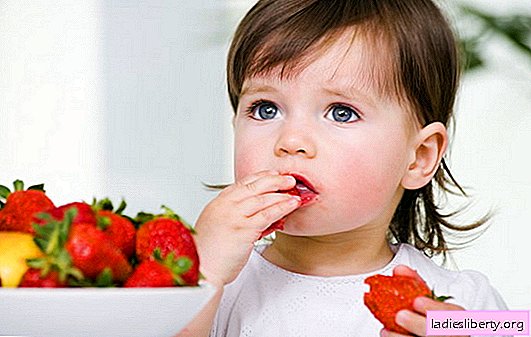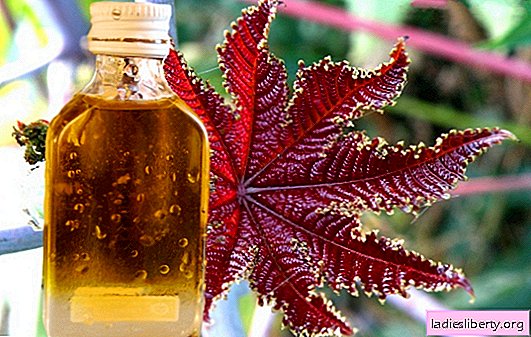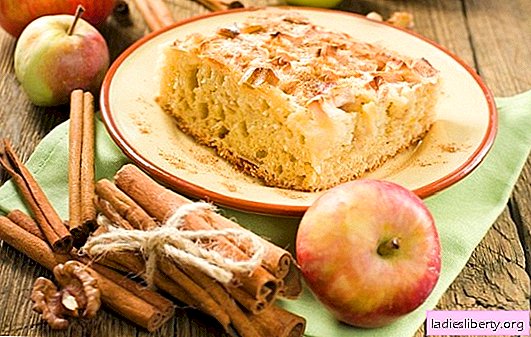
Food allergies occur when the body’s immune system malfunctions and marks the food ingredient (usually protein) as dangerous and creates a defense system (special compounds called antibodies) against it.
An allergic reaction occurs precisely at the moment of the struggle of antibodies with the "invading" protein food.
A person may need a diet for allergies to any component of the food, but the most common intolerance The following products:
• milk;
• eggs;
• a fish;
• shellfish;
• peanuts;
• nuts (often cashews and walnuts);
• wheat;
• soy.
Allergy Diagnostic Diet
To diagnose food allergies, doctors often recommend temporarily excluding certain foods from the diet. This method in combination with blood tests or skin tests, it may be useful in the diagnosis of IgE-mediated food allergies and related diseases (for example, intestinal problems, asthma or rheumatoid arthritis).
The diagnostic diet is carried out under the supervision of an experienced specialist and lasts two to four weeks. As a rule, wheat products, dairy products, corn, soybeans, citrus fruits, eggs, fish, nuts, chocolate, caffeine, alcohol, and artificial food additives (monosodium glutamate, sulfites, and food coloring) are primarily eliminated.
While the patient avoids the use of potentially dangerous products, doctor observes the symptoms. If one or more of these products cause allergies, the symptoms should disappear by the end of this period.
In some cases, doctors regulate the types and number of products, gradually introducing and alternating them in the patient's diet (for example, 1 time in four days). If the symptoms return with one or more products, then allergen found.
Diet does not always give 100% result for diagnosis, and in some cases requires additional examinations.
When an allergen is found, what kind of diet for allergies awaits the patient?
In acute attacks of allergy, the patient does not eat at all. Only drink. When the allergen is determined, the doctor will begin to introduce the least allergenic products into the diet. First of all, it is lamb meat, apples, pears, most legumes (except peanuts), rice and other gluten-free cereals. As a result, an elimination diet with allergies makes life easier for the patient.
Milk Allergy Diet
Milk allergy is often called lactose intolerance, which is fundamentally wrong. Usually, the latter does not pose a serious danger to a person, but only gives him discomfort in the form of an intestinal swelling, spasms, colic or diarrhea. Allergies mean a sharp reaction to milk protein. casein. Manifestations of this allergy are serious enough - from abundant rash and itching to anaphylactic shock.
If during lactose intolerance a person can take dairy products with a reduced content, then for allergies. any of the products listed below can be fatal:
• milk (including skim, condensed milk and dry milk);
• cream;
• buttermilk
• yogurt;
• kefir;
• ryazhenka;
• cream cheese;
• sour cream;
• cheese, cheese powder or cheese sauce;
• butter, spread, margarine;
• cottage cheese;
• whey and whey products.
Foods containing milk (milk products):
• casseroles;
• chocolate and sweets;
• coffee cream;
• bakery products;
• custard and butter cream;
• nougat;
• ice cream;
• puddings;
• white sauces.
How to "hide" milk on product labels:
• lactalbumin, lactalbumin phosphate;
• lactoglobulin;
• casein, caseinate, sodium caseinate, calcium caseinate, magnesium caseinate, potassium caseinate;
• lactose (milk sugar).
Casein is used in many products as a food additive - you can find it, including in chewing gum, and in meat, and in sausage. If the label says "does not contain milk", this does not mean the absence of casein in the product. Soy and almond cheeses may contain this allergen. Read labels carefully.
Unfortunately, a diet for milk allergy excludes any dairy products. Their taste qualities can be replaced with the help of non-dairy ice cream, cheese and yoghurt that appeared on the market, as well as chocolate (for dessert).
With dairy products a lot of calcium and vitamin D are supplied to the human body. With full refusal of milk more green vegetables (broccoli, spinach, etc.) and soy products should be added to the diet.
Eggs
Most often, an allergy to eggs occurs in young children, but adults also suffer from it. If it is suspected that the reaction is on eggs, then it is necessary to exclude from the diet of eggs and any products with their content.
The main groups of products containing eggs or egg powder:
• breadcrumbs;
• cupcakes;
• biscuit;
• some types of mashed potatoes (especially fast cooking);
• candies;
• pies and many flour pastries;
• rolls;
• donuts;
• egg noodles;
• marshmallow, soufflé;
• pudding;
• egg sauces (Dutch, mayonnaise, tartar);
• meringue;
• ice cream;
• fish or meat products in batter;
• waffles.
What substances should not be in the product bought in the store (read labels carefully) if you are allergic to eggs:
• albumin
• globulin
• ovalbumin;
• ovomucin;
• apovitellenin;
• Ovovitellin;
• lavetin;
• phosvitin;
• fat substitutes.
Eggs - the basis of the diet of modern man. They are present in the overwhelming number of finished products, so people with egg allergy have a particularly hard time. Diet for allergies to eggs is made especially carefully, excluding baking, many sauces, sweets, fast food products from the menu, and carefully consider the choice of ready-made products in the store.
Peanut
One of the most common food allergens in the world is recognized as peanuts. Allergy to it is very dangerous and potentially fatal.
In what form is peanuts sold:
• cold pressed peanut butter;
• peanut butter (pasta);
• peanut flour.
What foods may be present in peanuts:
• nut mixes;
• ground nuts;
• nougat;
• national dishes of Chinese, Thai, African and other cuisines;
• cakes, cookies and other pastries;
• marzipan;
• many sweets;
• egg rolls.
In finished products, peanuts can be “hidden” under the name "hydrolyzed vegetable protein".
Due to the potential danger of allergic reactions, it is necessary to completely eliminate products, even with a minimal likelihood of peanuts.
The nuts
There is a risk of cross-contamination of substances during the processing of nuts in food, so many allergists recommend that people with allergies only to one type of nuts refrain from eating all the products of this type.
Nuts that can be dangerous for people with this type of allergy:
• almonds;
• walnuts;
• cashew nuts;
• hazelnuts;
• Pine nuts;
• pistachios;
• pecan nuts;
• Brazilian nut;
• macadamia nuts.
Main products from nuts:
• marzipan or almond dough;
• nougat;
• artificial nuts;
• nutty aromatic oils (for example, almond oil);
• oils;
• nut paste;
• extracts (for example, almond extract).
All these and many other products for patients allergic to nuts are forbidden.
Unfortunately, just eliminating nuts from the diet, you can not be absolutely sure of safety. Be careful: sometimes nut oils are used in shampoos and other cosmetics (study their composition).
A fish
Protein in the meat of various types of fish can be very similar in its chemical composition. Therefore, you may have to abandon all types of fish and fish protein-containing products (only if the allergist cannot determine the specific species).
Products in which the fish is "hidden":
• Caesar salad";
• Worcestershire sauce;
• caviar;
• artificial seafood.
People who are allergic to fish protein should not only carefully study the composition of products from the store, but also refrain from ordering seafood in public catering. In a dish, for example, from shrimps, fish protein can get from the working tools in the kitchen (shovels, colander or grill), with which all seafood is prepared. Some restaurants use the same oil for frying shrimp, chicken and french fries.
Soy products
Soybeans are increasingly used in prepared foods. Many baked goods, crackers, cereals, breast milk substitutes, sauces, soups, as well as sausages or other meat products contain highly allergenic soy. In addition to soybeans, there are many species of the legume family, to which an allergic reaction is quite rare - beans, peas, chickpeas, lentils, black beans, navy beans, and others. People who are allergic to soybeans need to be careful with other types of legumes, but usually the reaction does not apply to them.
Find soy products contained in the products by name:
• hydrolyzed soy protein;
• hydrolyzed vegetable protein;
• isolated soy protein (ISP);
• textured vegetable protein (TVP);
• soy protein;
• soy flour;
• soy grits;
• soy nuts;
• soy milk;
• soy sprouts;
• isolated vegetable protein.
Doctors recommend the complete elimination of soybeans from the diet of allergies. Fortunately, it has something to replace.
Wheat
Patients with allergies to wheat and all its derivatives are probably the hardest.
Diet for wheat allergy implies the complete elimination of the following products:
• wheat flour of all grades;
• Wheat groats;
• semolina;
• wheat starch and modified;
• bran;
• wheat malt.
At the on-site consultation, the doctor will tell you more about wheat derivatives that may cause an allergic reaction. As for the names in the composition of the finished products, people with wheat allergies need to be wary:
• gluten free;
• gelatinized starch;
• hydrolyzed vegetable protein;
• wheat bran;
• wheat germ;
• wheat gluten;
• dextrin;
• Caramel flavoring;
• extracts, including vanilla.
Wheat flour contains many foods, including sauces and even ice cream. If the ingredient "gluten" is present in the composition of the finished product, this product is prohibited for those allergic to wheat.
Sample hypoallergenic menu
After stopping the first attack of allergy and suspicion of a food allergen, the patient is forbidden to eat, and in severe cases even drink. Fasting is spread on the first day. From the second day, depending on the suspected product, it is possible to eat hypoallergenic products in minimal quantities.
The following is an approximate diet menu for allergies that you can use allergies.
Breakfast: buckwheat porridge with sugar and one pear tea.
Dinner: salted rice noodles with olive oil, steamed veal cutlets with greens, dried fruit compote.
Dinner: stew of veal, potatoes, cabbage and onions, tea.
Apple, rice and cornflakes, buckwheat or rice cakes, currants, light cherries, bananas are suitable for snacking.
Gradually add other foods to the diet and monitor the reaction. As a result, the patient is selected elimination diet, which he will adhere either to the period of exacerbations, refraining from a number of seasonal products, or for life.
Before changing your diet significantly, need to consult a doctor. You may have to replace the missing product with a biological supplement or a vitamin complex.











